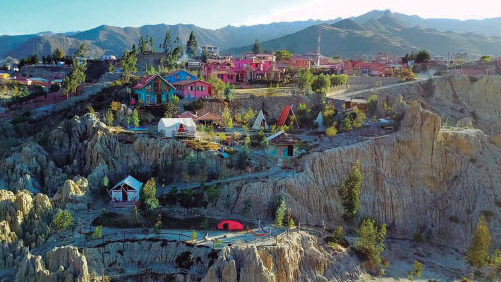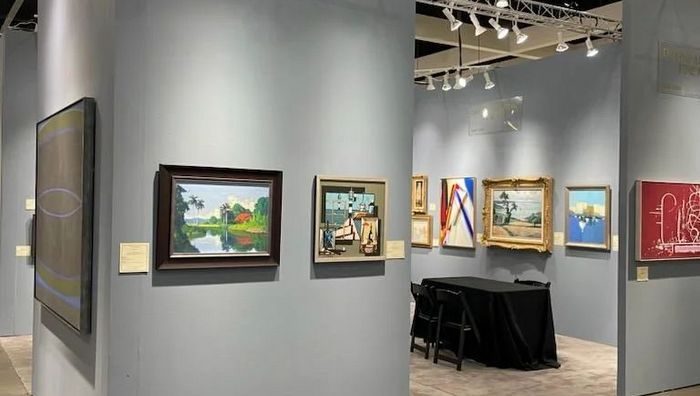Let’s begin with a common, equally necessary place to lodge ourselves in the point we want to get to. Any compilation is, in its most natural essence, a say-it-to-yourself, an action which is not stripped of a certain dose of white violence that the compiler infringes on his own intelligence as a demonstration of a certain faith and indispensable honesty to make the defined theses of the very compiling action believable in an outer environment that’s both vague and necessary. It’s likewise important the urgency of displacing that say-it-to-yourself need onto the land of denunciation rather than critique that also, of course, like the need to show and demonstrate rather than “orchestrate” –that’s definitely what any compilation is all about- a series of documents written and theorized by others that implies a gesture which is not simple at all: that of taking issue, of committing oneself. As Didi-Huberman writes in a magnificent essay on Brecht, When Images Take Position, taking issue or position is putting oneself at least twice on the two fronts, a move that leads to the action of facing off a certain reality because any elective action is deadly relative. In effect, it all boils down to facing something, yet we also need to count on all those things we detach from, the unselected, the offside call that’s standing right behind us, that maybe we deny but that is right there playing a major role in conditioning our moves, therefore our position and, last but not least, our “balance.” That explains the perils of any compilation: putting the action doer on a tight rope from which we peek, in the productive abyss of the doubt, both success and failure. We, the most unfaithful is a compilation of critical and theoretical texts about Cuban art in the course of the past fifteen years culled by Andres Isaac Santana whose subtitle carries the important –we’ll explain later on why it’s so important- and clarifying phrase “Critical Narrations” on artistic creation on the island nation and by Cubans living abroad. Both the fortunate title –it underscores the fictional quality of any cultural document– and the off-key acceptance of its being “critical narrations” indeed –something that whets the desire because compilations should never abandon their “artistic” quality, or better yet the effort of living up to the notion that any “scientific truth”, spinning around the both treacherous and gaudy metaphysics of art theory that owes its own truth to the fatal subjectivity of narration or storytelling- come together to outline a map of knowledge, a cartography in which “passion” and “truth” merge to come up with a theoretical testimony, a critical narration indeed of Cuba’s artistic creation (inside and outside the island) during a historical period that begins with the verification that the Berlin Wall had crumbled down for good (1993) and the first signals (2005) that the triumphant economic capitalism –in its brutal voracity and selfishness- was devouring itself, throwing mercilessly millions of workers into poverty, just as we’ve been able to see now three years after those initial signals. Indeed, the most beautiful and valuable thing about “critical narrations” and “moral stories” is that nothing is fortuitous –though it seems to be- and nothing is left to chance. As a matter of fact, “chance” is one of the many monikers that the “art truth’s enhanced idea” really has. There’d be no “historic truth” unvested of the preceding drive of a “cultural truth,” of a suspicion, of a clue, of the least enlightening element. Never before a compilation of theoretical texts about art was unintentionally so dialectically historic, so critical of a certain moment in time that even though we all were in the know of “what it was” (1993), it needed the arts to peep at “what would unavoidably be coming (2005).” We, the most unfaithful –a thousand pages crammed with information and without a single concession to the grateful vision of the works we’re so used to- culls nearly a hundred theoretical texts grouped in eight long chapters in which Andres Isaac Santana opens up new pathways to put this humongous theoretical magma on the right tracks that are both subjective and necessary, indispensable and passionate, rigorous and whimsical, scientific and hazardous, so fictitiously real as examples of a conjured truth. I think it’ll be far more suitable to delve into the isolated details of some concepts wielded by the compiler than quoting the exact titles of each and every chapter, even though the syntagms we’re going to mention below stand up for those “critical narrations” whose importance has been underlined at the top of this article. Having said this, in the mentioned chapters we hit on the fact that the situation projects a “maze entrance,” “a cartographic speculation,” “an autonomy as a mirage,” “discursive signals, sentences and stories,” “reviews of the myth,” “voices and subjectivities on the sidelines,” “heterotopic displacements” featuring deviations in “insularities and memories,” or just “representation and language off-centering.” Though most of the texts are written no less by Cuban critics and theoreticians, there are also a few visions from “overseas”, yet the very finest articles were penned by experts from the turf. From the magnificent forewords written by Rufo Caballero all the way to the lucid and painstaking essays by some of the island nation’s critical heavyweights, or by the Cuban Diaspora scattered all around the globe, the compilation is really something. Good cases in point are the works by Lupe Alvarez, Gerardo Mosquera, Magali Espinosa, Danny Montes de Oca, or Rufo Caballero himself, authors of extraordinary approaches to Cuba’s artistic reality with some well-known texts that are nevertheless greatly admirable for a second reading. And though the aforesaid names are all pretty well known in Spain for those of us who keep tabs on the Cuban arts and artistic creation, it wouldn’t be less appropriate –no matter how unknown or unexpected they might be- to read lots of other contributions that engross the vast panorama put together by Andres Isaac Santana, chiefly when on this side of the Atlantic Ocean what we know of Cuban art is just what comes down the pike –institutionally directed or not- and goes abroad, and not even always with the best intentions nor with the same level of honesty. The case of those Cuban artists living in other parts of the world, though, is a completely different ballgame. Fernando Castro and I had the honor of presenting We, the Most Unfaithful at the Queen Sophia Bookstore in Madrid and my very first impression from the ambition essay –it’s virtually a huge essay rather than an adequate and wise compilation- was envy. There’s nothing like it in Spain, not at all, something that could paint a good picture of Spain’s artistic creation during that same period of time, a period of emblematic and decisive years. Such a book here could help knock down the shaky pedestals that remain untouched in the dimwitted bourgeois comfort that still rules Spain’s contemporary artistic, theoretical and critical scene. Rufo Caballero writes these words in the prologue, “We… makes fun at the hopes of hegemony at any level. In fact, it mocks with wittiness and wisdom at far more things. For instance, at the poor fallacy of assuming the fact –from the First World- that we do know a lot over here. I’d say we pick up quite a lot from common wisdom about everything going on outside our boundaries. Just another lie from the many that make us up. Our ignorance is as arrogant as blatant and lethal. A thorough reading of We… will humbly make us realize of that. We also feel humbly glad that a book so decisive to understand and size up the Cuban art over the past fifteen years has been put out by a small Spanish publishing house.” Luis Francisco Perez (Spain) Art critic and Curator luisfran2121@terra.es

Related Publications

How Harumi Yamaguchi invented the modern woman in Japan
March 16, 2022
Giovanni Duarte and an orchestra capable of everything
August 26, 2020











